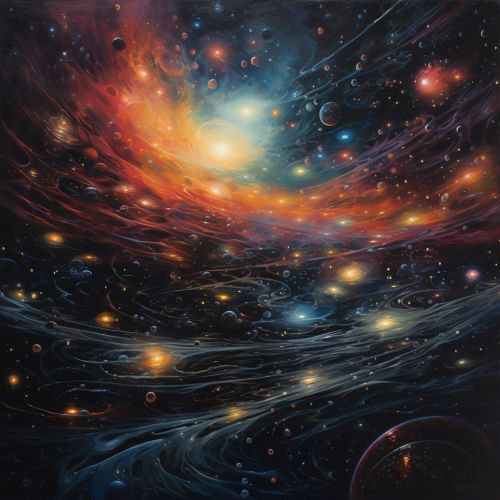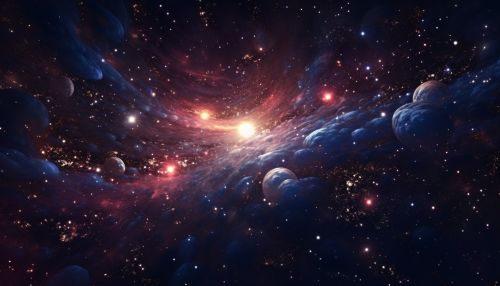Friedmann-Lemaître-Robertson-Walker metric
Introduction
The Friedmann-Lemaître-Robertson-Walker (FLRW) metric is a solution to Einstein's field equations of general relativity that describes a homogeneous, isotropic expanding or contracting universe. Named after Alexander Friedmann, Georges Lemaître, Howard P. Robertson, and Arthur Geoffrey Walker, the FLRW metric is a cornerstone of modern cosmology and the mathematical foundation for the Big Bang theory and the Lambda-CDM model.


Mathematical Formulation
The FLRW metric is mathematically expressed in the form of a Lorentzian manifold, a type of differential geometric structure used to model spacetime in general relativity. The metric is given by:
ds² = -c²dt² + a(t)²[dr²/(1-kr²) + r²dΩ²]
where: - ds² is the spacetime interval, - c is the speed of light, - t is time, - a(t) is the scale factor, which describes the expansion of the universe, - r is the comoving radial coordinate, - k is the curvature constant, which can take values of -1, 0, or 1 corresponding to open, flat, and closed universes respectively, - dΩ² is the solid angle, given by dθ² + sin²θdφ² in spherical coordinates (θ, φ).
Cosmological Models
The FLRW metric allows for three distinct types of universes depending on the value of the curvature constant k. These are:
1. The open universe (k = -1): This model describes a universe with negative curvature or hyperbolic geometry. The universe expands forever in this model.
2. The flat universe (k = 0): This model describes a universe with zero curvature or Euclidean geometry. The universe also expands forever in this model, but at a rate that slows down over time.
3. The closed universe (k = 1): This model describes a universe with positive curvature or spherical geometry. The universe expands to a maximum size and then contracts in a "big crunch" in this model.
The current observational evidence, most notably from the cosmic microwave background, suggests that our universe is flat or very close to flat.
Cosmological Parameters
The behavior of the universe described by the FLRW metric is determined by a set of cosmological parameters. These include the Hubble constant H₀, the matter density parameter Ωm, the radiation density parameter Ωr, the dark energy density parameter ΩΛ, and the curvature density parameter Ωk. These parameters are constrained by various cosmological observations, including the cosmic microwave background, supernovae, and large-scale structure.
Implications and Applications
The FLRW metric has profound implications for our understanding of the universe. It provides the mathematical framework for the Big Bang theory, describing a universe that was extremely hot and dense in the past and has been expanding and cooling ever since. It also predicts the observed redshift of distant galaxies, the existence and properties of the cosmic microwave background, and the large-scale structure of the universe.
The FLRW metric is also used in the study of dark energy, the mysterious force driving the accelerated expansion of the universe. Different models of dark energy, such as the cosmological constant and quintessence, lead to different evolution histories for the scale factor a(t) and hence different observable effects.
Criticisms and Alternatives
While the FLRW metric has been remarkably successful in explaining a wide range of phenomena, it is not without its critics. Some have pointed out that the assumptions of homogeneity and isotropy are idealizations that may not hold in the real universe. Others have proposed alternative cosmological models that do not assume a Big Bang origin, such as the Steady State theory and the cyclic model.
